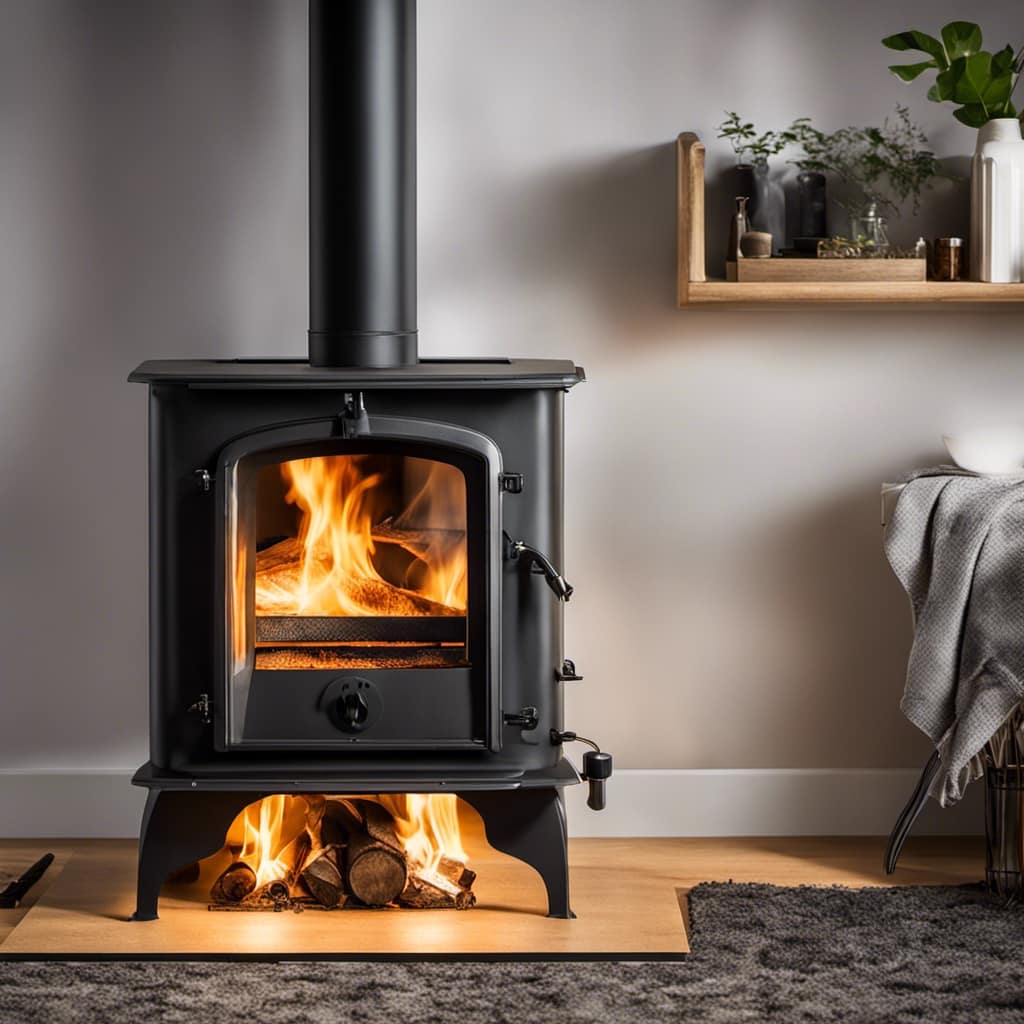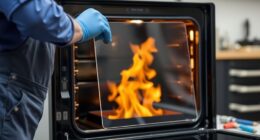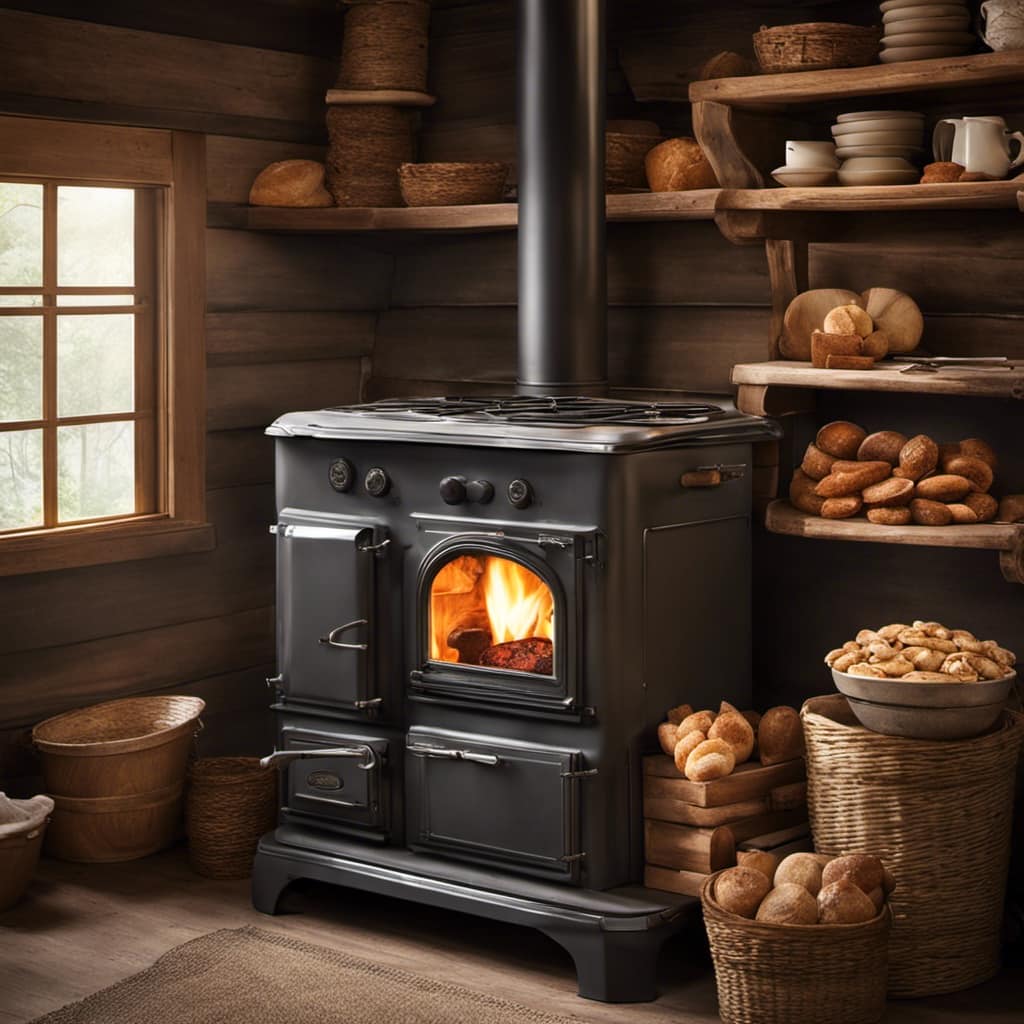
Have you ever thought about why your wood stove struggles to maintain a flame during windy days?
In this article, I will explore the impact of wind on wood stove efficiency and discuss common issues that arise with the draft.
We will delve into the intricacies of airflow and how wind can affect the performance of your wood stove.
Additionally, I will provide troubleshooting tips for igniting a fire in windy conditions and share techniques and accessories to make your wood stove more wind-resistant.

Key Takeaways
- Wind strength and direction can significantly affect the efficiency of a wood stove.
- Proper wood stove placement, considering prevailing wind direction, is crucial for optimal performance.
- Downdrafts can occur on windy days, pushing smoke back into the house, but can be prevented by installing a chimney cap.
- Pressure variations caused by wind can disrupt airflow and reduce combustion efficiency, but features like baffles, air intakes, and chimney caps in wood stoves help regulate air supply and minimize the impact of wind.
The Impact of Wind on Wood Stove Efficiency
I’ve noticed that the wind’s strength and direction significantly affect the efficiency of my wood stove. Understanding wind patterns and proper wood stove placement is crucial for optimal performance.
When positioning the stove, it’s important to consider the prevailing wind direction and avoid placing it in a spot where the wind will blow directly into the stove’s intake or exhaust. This can disrupt the combustion process and decrease efficiency.
Another factor to consider is the height of the chimney. A taller chimney can help minimize wind interference by creating a stronger draft and improving the airflow. This allows for better combustion and prevents smoke from lingering in the stove or backdrafting into the room.
Proper consideration of wind patterns and chimney height is essential for maximizing the efficiency of a wood stove.

Common Issues With Wood Stove Draft on Windy Days
On windy days, the wood stove draft can be affected by both the gusts of wind and the position of the chimney. When troubleshooting draft issues, it’s important to consider these factors and implement effective windproofing techniques.
One common problem is a downdraft, where wind enters the chimney and pushes smoke back into the house. To address this, installing a chimney cap with proper design and dimensions can help prevent downdrafts.
Another issue is a weak draft, which can result in inefficient burning and reduced heat output. To improve the draft, check for obstructions in the chimney, such as debris or creosote buildup, and clean them out if necessary.
Additionally, adjusting the damper position and ensuring proper air intake can enhance the draft and optimize wood stove performance on windy days.

Understanding Airflow: How Wind Affects Wood Stove Performance
Wind can significantly impact the performance of a wood stove, affecting its airflow and efficiency. Understanding the relationship between wind patterns and wood stove design is crucial to optimizing its functionality.
Here’s a brief overview of the science behind wind resistance in wood stoves:
-
Airflow dynamics: Wind creates pressure differentials around the wood stove, influencing the movement of air inside and outside the appliance. These pressure variations can disrupt the natural airflow, leading to reduced combustion efficiency.
-
Ventilation system design: Wood stoves are designed with features to minimize the impact of wind. Elements like baffles, air intakes, and chimney caps help regulate air supply, maintain proper draft, and prevent downdrafts caused by gusts of wind.
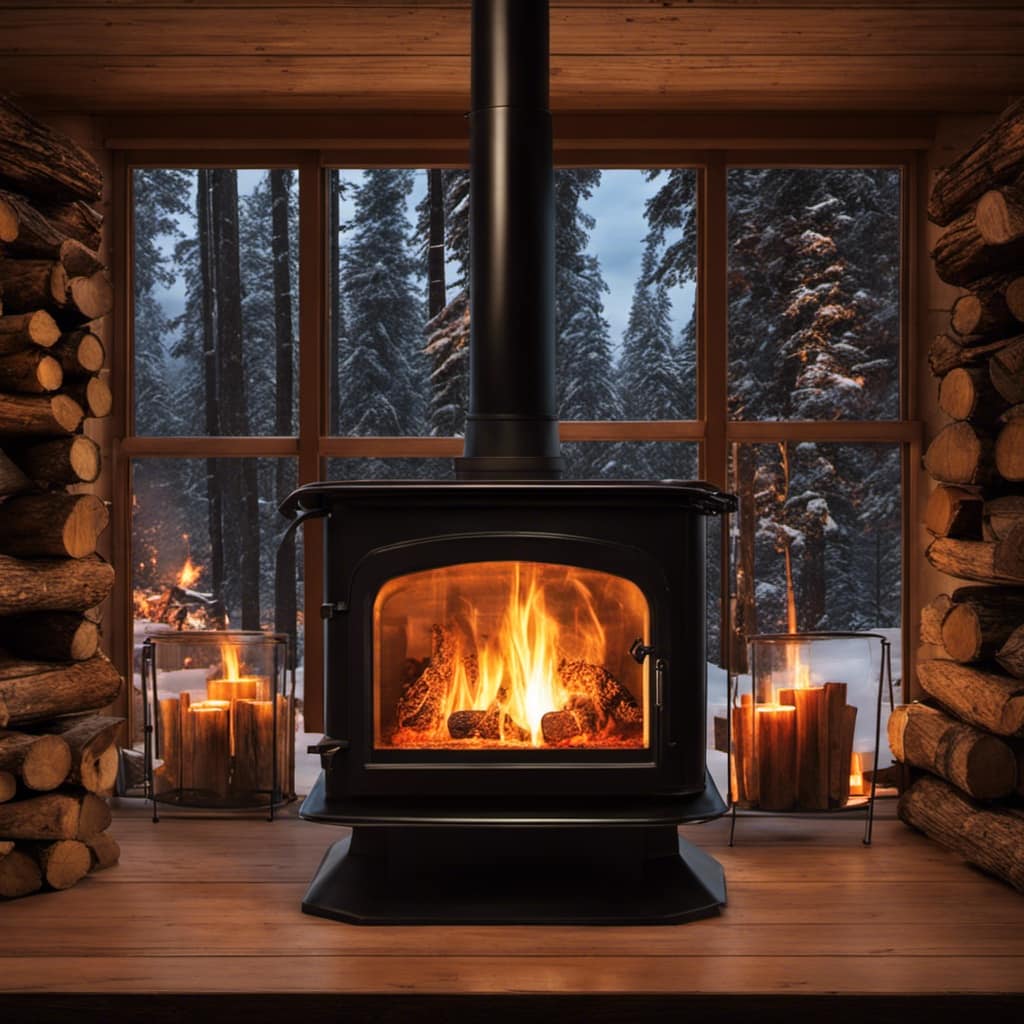
-
Insulation and sealing: A well-insulated wood stove and properly sealed joints prevent unwanted air infiltration or exfiltration, reducing the effect of wind on the stove’s performance.
Understanding these principles is essential for troubleshooting tips for igniting a fire in windy conditions.
Troubleshooting Tips for Igniting a Fire in Windy Conditions
I can provide you with some helpful tips for successfully igniting a fire in windy conditions. When starting a fire in strong winds, it’s important to take certain precautions to ensure safety and efficiency. Here are some tips to keep in mind:
| Precautions | Tips |
|---|---|
| Protect the fire area | Clear the area of any flammable materials and create a windbreak, such as using a fire-resistant barrier or building a temporary windbreak with rocks or logs. |
| Control airflow | Adjust the damper to control the amount of oxygen entering the stove. Too much airflow can cause the fire to burn too quickly, while too little airflow can result in poor combustion. |
| Use fire starters | Use fire starters, such as newspaper or kindling, to create a small, hot fire that can withstand strong winds. |
| Add smaller pieces of wood | Start with smaller pieces of wood to establish a solid base before adding larger logs. This will help maintain a steady burn even in windy conditions. |
| Monitor the fire | Keep a close eye on the fire and make sure it is properly contained. If the wind becomes too strong or the fire becomes uncontrollable, it may be necessary to extinguish it. |
Wind-Resistant Wood Stove Techniques and Accessories
I’ve found that using a combination of three wind-resistant techniques and accessories has significantly improved my wood stove’s performance in windy conditions. Here are the top three items that have made a difference:
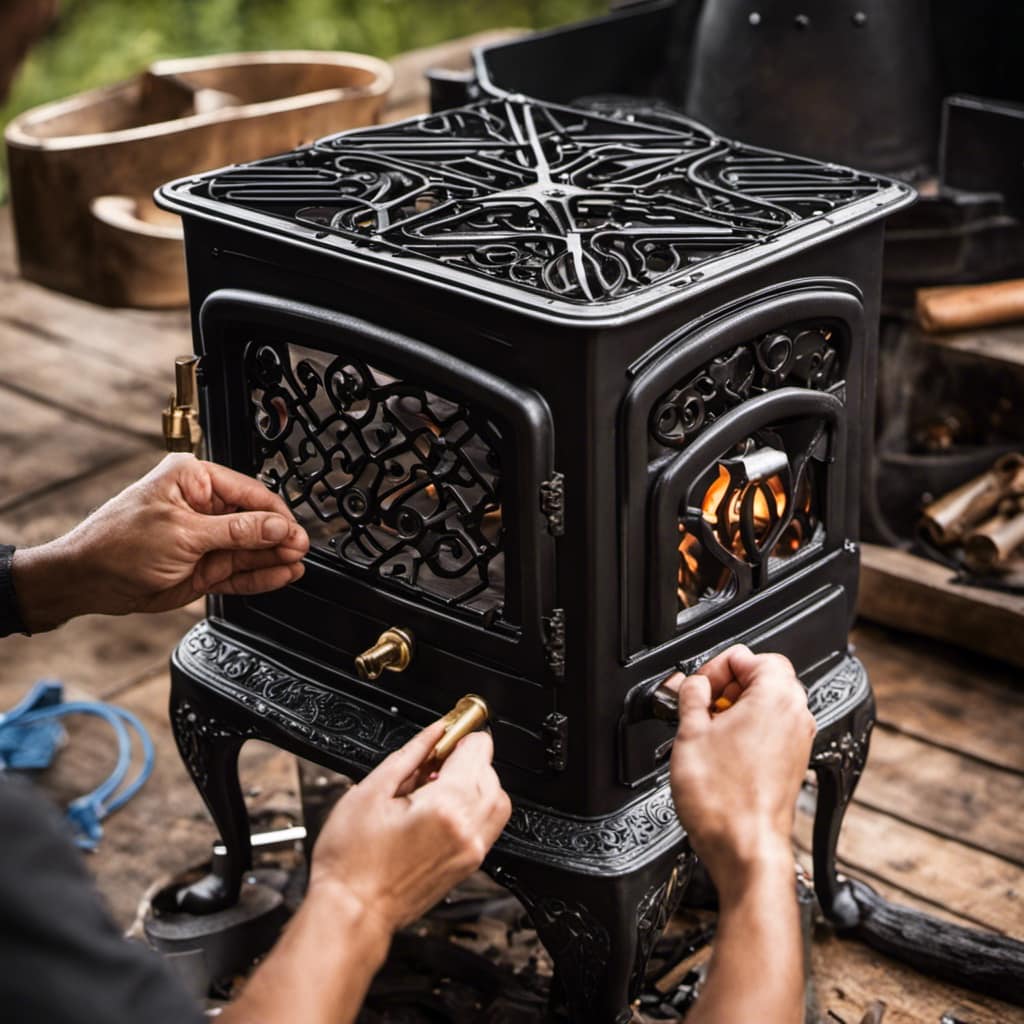
-
Wind-Resistant Stove Design: Investing in a wood stove specifically designed to resist wind can greatly enhance its performance. Look for stoves with a sealed door, adjustable air intake, and a well-insulated body to prevent gusts from extinguishing the flame.
-
Wind Blocking Stove Accessories: Adding wind blocking accessories such as a stove windscreen or wind guard can create a barrier against strong gusts. These accessories work by redirecting the airflow away from the stove, allowing for a more stable burn.
-
Chimney Cap or Wind Deflector: A chimney cap or wind deflector can help prevent downdrafts from entering the flue and causing the flame to flicker or go out. These additions can redirect the wind away from the chimney, ensuring a more consistent burn.
Frequently Asked Questions
How Can I Improve the Efficiency of My Wood Stove in Windy Conditions?
To improve wood stove efficiency in windy conditions, ensure proper draft by opening the damper fully. Use a windscreen to prevent gusts from blowing out the fire. Also, consider using a secondary combustion system for better performance.

What Are Some Common Issues With Wood Stove Draft on Windy Days?
Common causes of poor wood stove draft in windy conditions include a blocked or insufficient chimney, improper damper adjustment, or inadequate air intake. To prevent smoke from blowing back into the house, ensure proper ventilation and chimney maintenance.
How Does Wind Affect the Performance of a Wood Stove?
Improving wood stove performance involves understanding wind’s impact on efficiency. Wind can disrupt the draft, causing poor combustion and reduced heat output. Properly positioning the stove and using wind-blocking measures can mitigate these effects.
What Are Some Troubleshooting Tips for Igniting a Fire in Windy Conditions?
When it’s windy outside, troubleshooting tips can help ignite a fire in my wood stove. Techniques like using a windbreak, adjusting the air intake, and using accessories like a chimney cap can make a difference.
What Techniques and Accessories Can Help Make a Wood Stove More Wind-Resistant?
Wind resistant wood stove accessories, such as a draft guard or wind cap, can help prevent wind drafts. Additionally, techniques like adjusting the damper and ensuring proper insulation can make a wood stove more resistant to windy conditions.

Conclusion
In conclusion, when faced with windy conditions, the efficiency of a wood stove can be significantly impacted. Common issues such as draft problems may arise, hindering the stove’s performance. Understanding the airflow dynamics and employing troubleshooting techniques can help ignite a fire successfully.
Additionally, utilizing wind-resistant techniques and accessories can further enhance the wood stove’s ability to withstand windy conditions and ensure optimal performance.
Growing up surrounded by the vast beauty of nature, Sierra was always drawn to the call of the wild. While others sought the comfort of the familiar, she ventured out, embracing the unpredictable and finding stories in the heartbeat of nature.
At the epicenter of every remarkable venture lies a dynamic team—a fusion of diverse talents, visions, and passions. The essence of Best Small Wood Stoves is crafted and refined by such a trio: Sierra, Logan, and Terra. Their collective expertise has transformed the platform into a leading authority on small wood stoves, radiating warmth and knowledge in equal measure.

